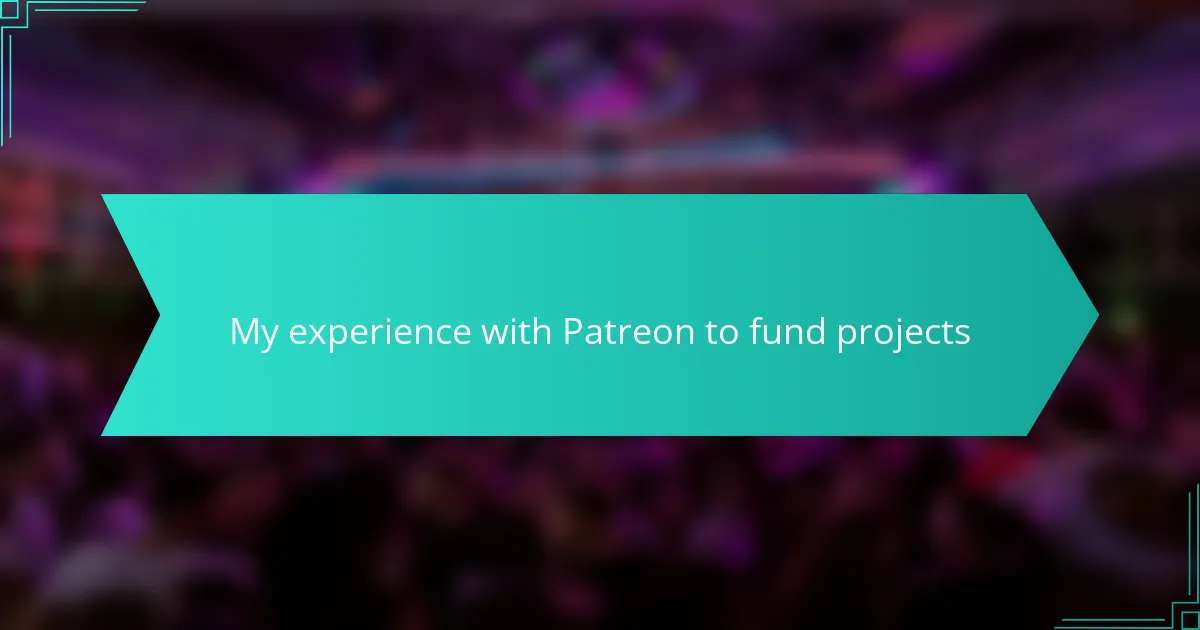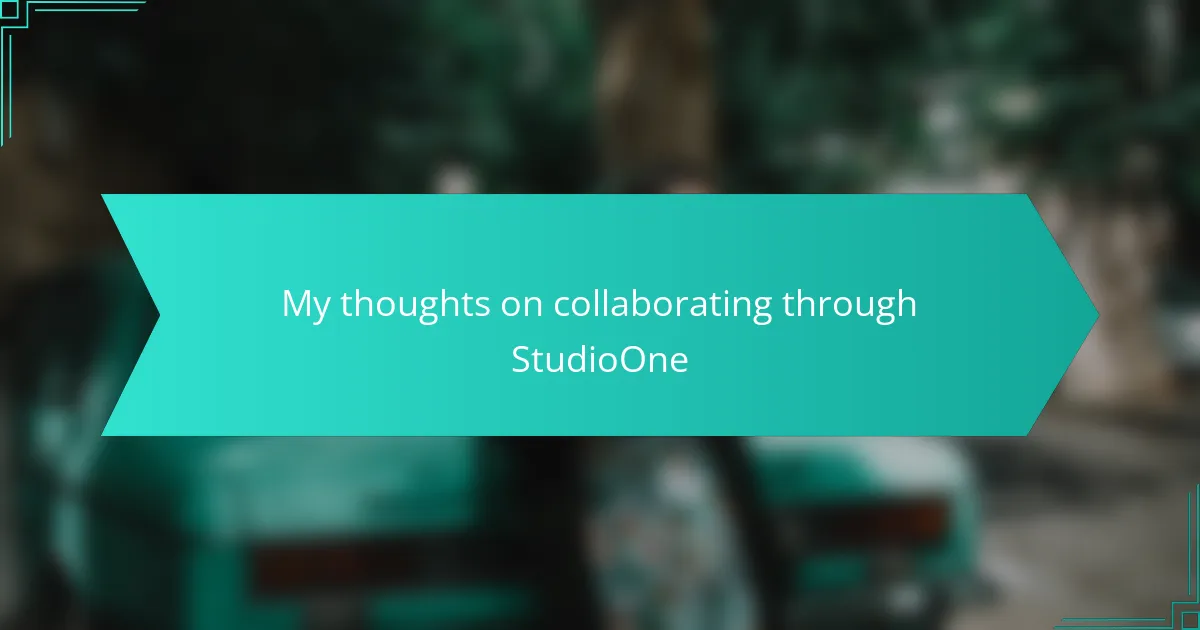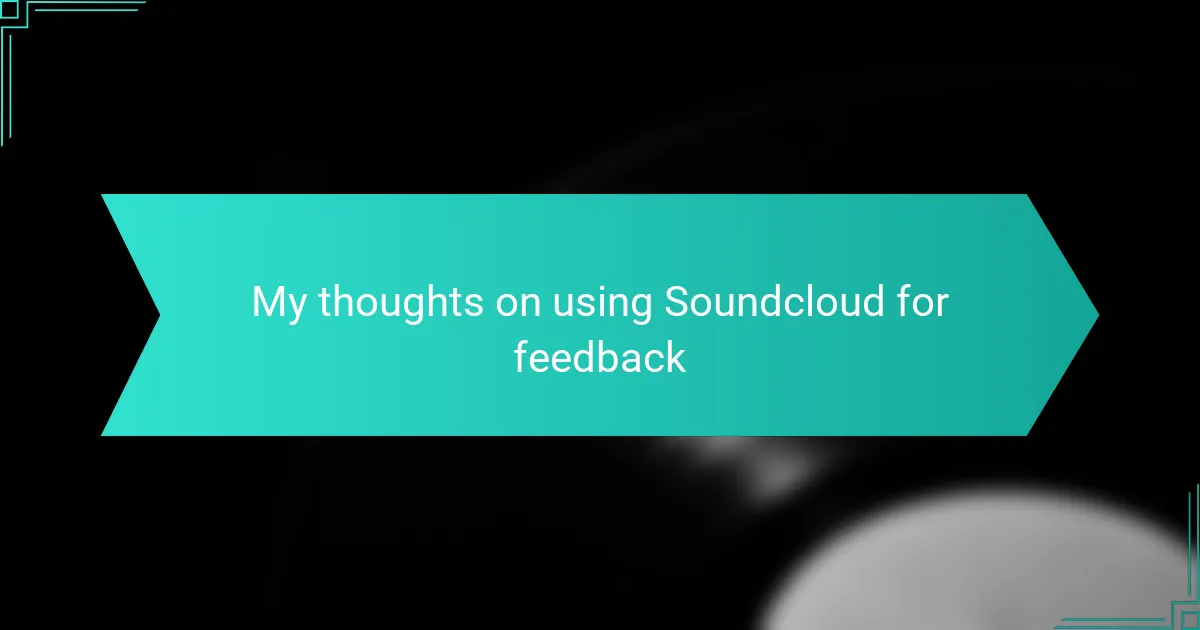Key takeaways
- YouTube serves as a valuable learning platform, offering a diverse range of tutorials and fostering a supportive community among musicians.
- Creating a YouTube channel allows musicians to share their journey, build confidence, and engage with an audience through consistent content and interaction.
- Engagement strategies, such as responding to comments and sharing personal stories, are essential for building a loyal fan base and fostering community.
- Utilizing analytics and audience feedback can guide content creation, enhancing relevance and viewer satisfaction on the channel.
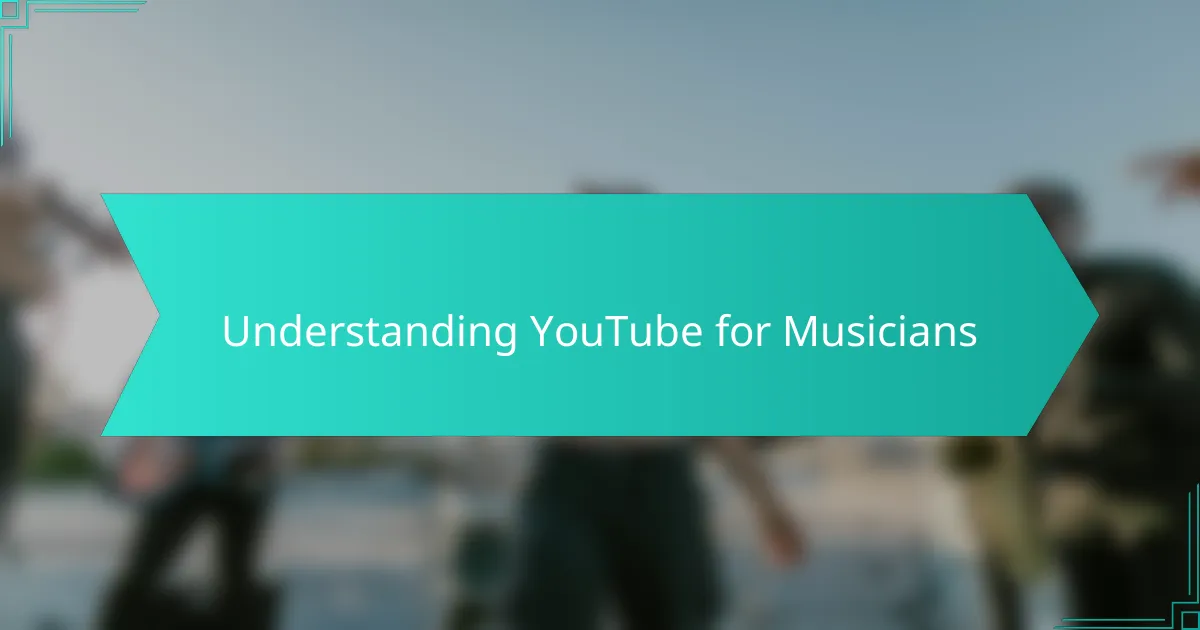
Understanding YouTube for Musicians
YouTube has become an invaluable tool for musicians like me, transforming how we learn and share our craft. I remember the first time I stumbled upon a guitar tutorial that broke down my favorite song. It felt like having a personal teacher right in my living room. How amazing is it that a platform can connect you with a world of knowledge at the click of a button?
Navigating YouTube can be overwhelming, given the vast number of tutorials available. I often find myself filtering through countless videos, seeking the ones that resonate with my style and learning pace. This process of trial and error not only sharpens my skills but also enhances my appreciation for different teaching styles and techniques. How do you choose the right tutorial when faced with so many options?
I’ve also noticed that engaging with the community in the comment sections of these videos offers valuable insights. Whenever I ask a question or share my experience, it creates a sense of connection with other musicians who are on the same journey. This interaction adds a layer of support that feels encouraging and motivating, reminding us that we’re not alone in our musical aspirations. Have you ever felt that sense of community while learning something new online?
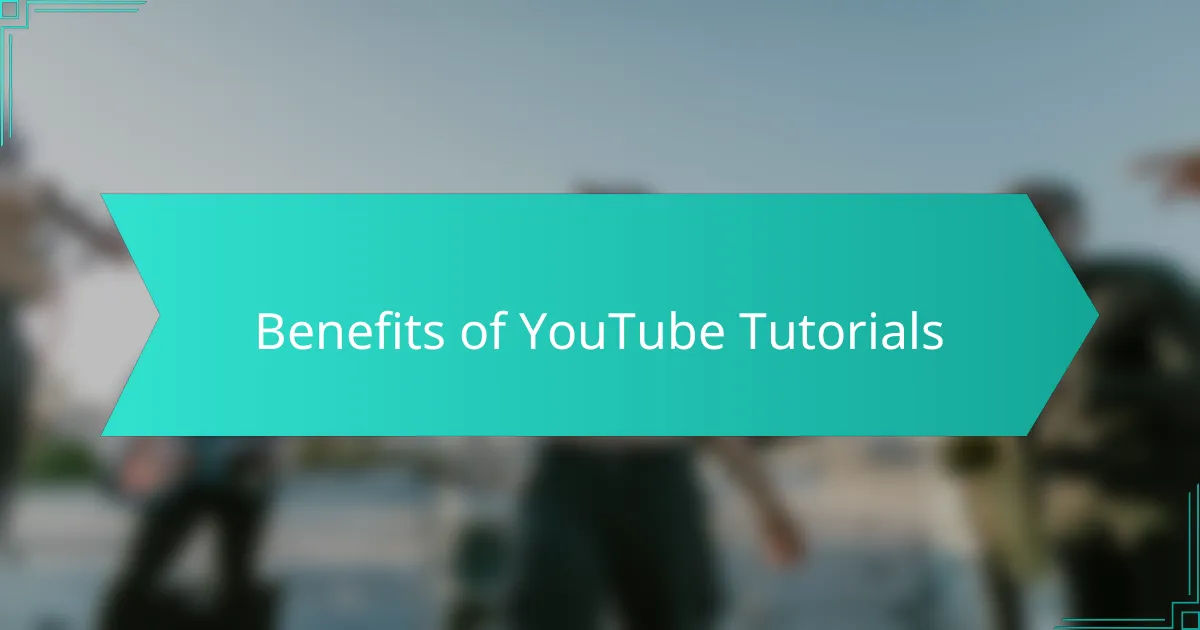
Benefits of YouTube Tutorials
One of the biggest benefits of YouTube tutorials is the sheer variety of content available. I’ve found tutorials ranging from beginner basics to advanced techniques, all tailored to different instruments. Isn’t it fantastic to think that you can find a walkthrough for nearly any song or technique you’ve ever wanted to learn?
Additionally, many instructors provide visual aids and step-by-step guidance, which can be incredibly helpful for visual learners like me. I recall watching a video on music theory that used colorful graphics to illustrate complex concepts, making the learning process much more enjoyable. Have you ever watched a tutorial that just clicked for you, changing how you approached your practice?
Moreover, the flexibility of YouTube is unparalleled. I can pause, rewind, or review sections as many times as I need. There are times when I’ve struggled with a tricky chord progression, but the ability to revisit the tutorial has made all the difference. How empowering is it to have that kind of control over your learning?
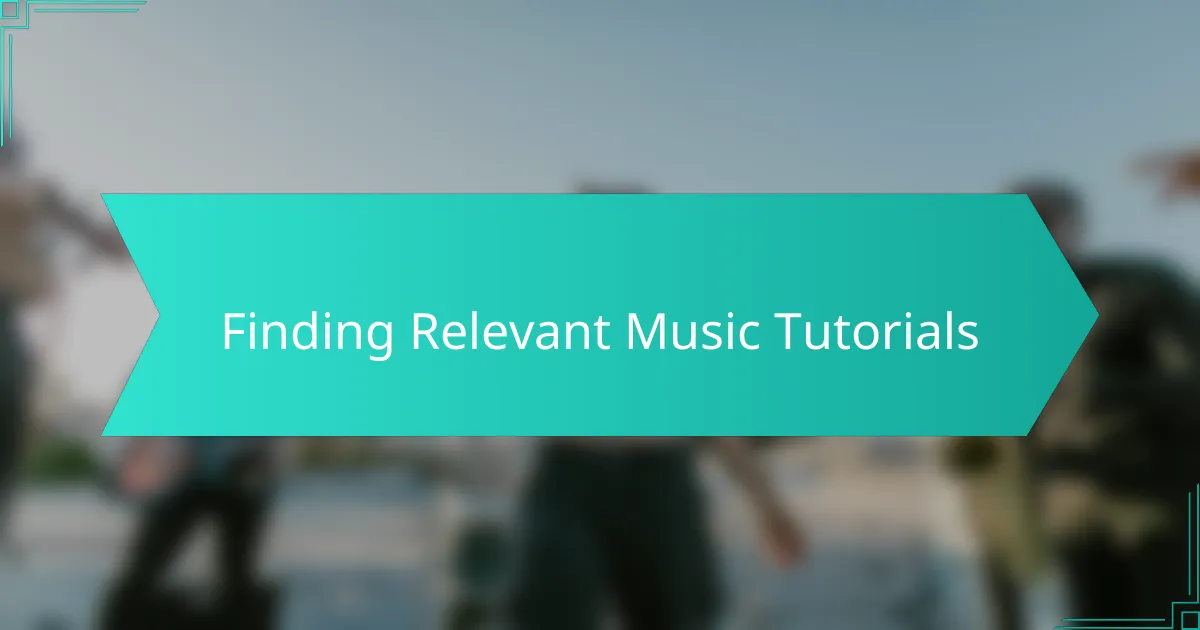
Finding Relevant Music Tutorials
Finding relevant music tutorials on YouTube can be an art in itself. I typically start by using specific keywords related to what I want to learn, whether it’s a particular song or a technique. I remember searching for “fingerpicking patterns” and discovering a hidden gem that not only taught me the basics but also introduced me to a whole new style of playing. How rewarding is it to stumble upon a tutorial that opens up new worlds in your musical journey?
Once I have a list of potential videos, I scan the comments and like-to-dislike ratios. I find that positive feedback from other learners can be a good indicator of the tutorial’s quality. I still recall the excitement I felt when I found a series of drum lessons praised for their clarity. It’s like finding a friendly guide among the noise. Does anyone else pay attention to the community feedback before diving into a tutorial?
Lastly, I always make sure to check the creator’s background and credentials. Many of my favorite instructors share their own experiences and struggles, which makes their teaching relatable. I once watched a video from a former session musician who shared invaluable tips that resonated with my own challenges. I can’t help but think how much richer the learning experience becomes when there’s a personal connection. What matters to you in a tutorial – the creator’s experience or the content itself?
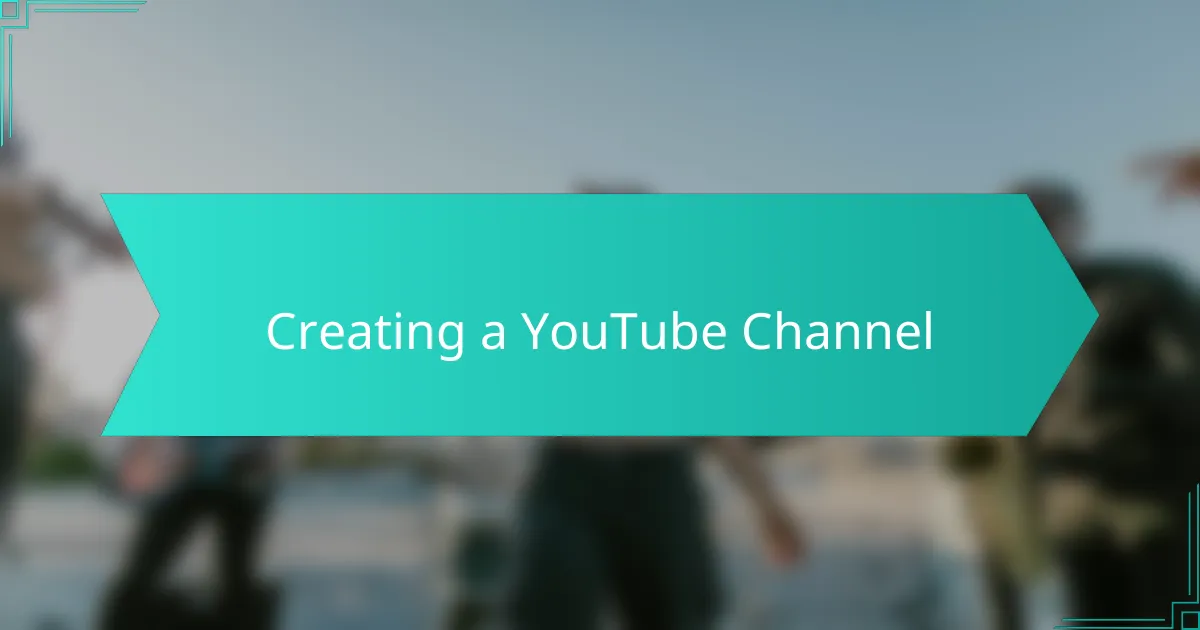
Creating a YouTube Channel
Creating a YouTube channel can be a game changer for any musician looking to share their skills and connect with a wider audience. When I first started, I was nervous about putting my content out there, but the excitement of reaching people who cared about music like I do pushed me to take the leap. I quickly discovered that having a dedicated space for my tutorials not only built my confidence but fostered a sense of community among my viewers.
I found that consistency was key to growing my channel. It’s important to stick to a posting schedule, as it builds anticipation and encourages viewers to return for more. I learned to engage with my subscribers by asking for their feedback and what they’d like to see next, which really helped in creating content that resonated with them.
Here’s a quick table comparing some platform features that are particularly important for musicians creating a YouTube channel:
| Feature | Importance |
|---|---|
| Video Quality | High-quality visuals and sound are essential for showcasing your musical talent effectively. |
| Engagement Tools | Comment sections and community tabs help foster interaction with your audience. |
| Analytics | Understanding viewer stats can guide your content decisions and improve your reach. |
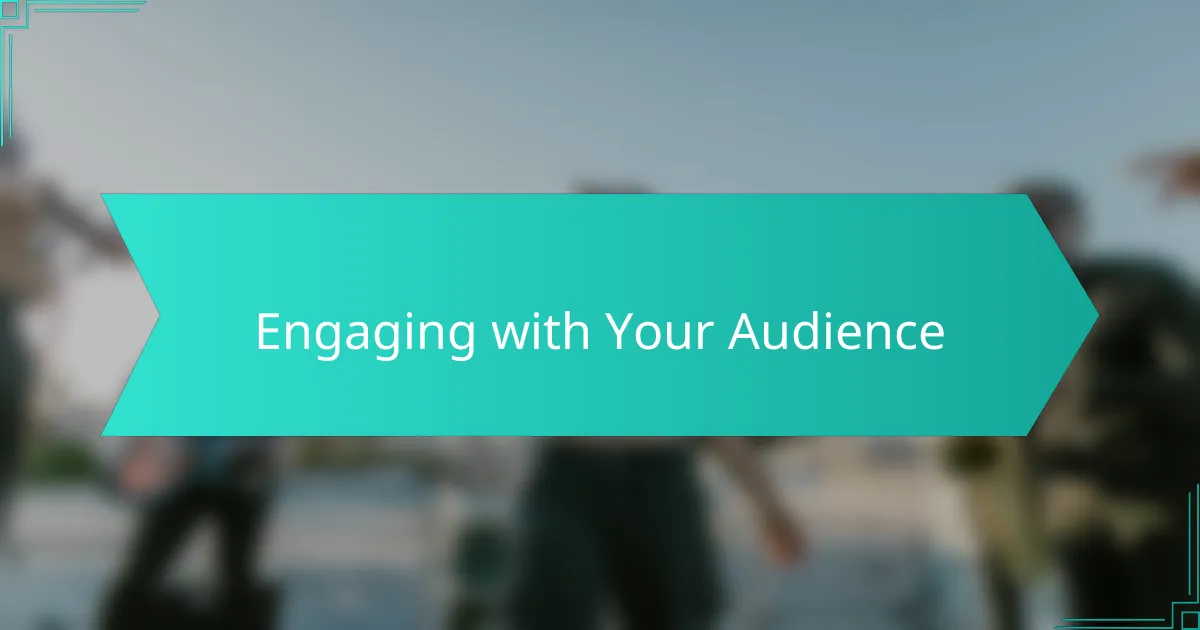
Engaging with Your Audience
Engaging with your audience is vital for any musician, as it helps build a loyal fan base. I remember the first time I responded to comments on my tutorial videos; it felt rewarding to connect with viewers. When I took the time to ask them questions or share my own experiences, I noticed that engagement soared, creating a community around my music.
To enhance your interaction, consider these effective strategies:
- Respond to comments promptly to show you value viewers’ input.
- Encourage viewers to share their experiences related to your tutorial.
- Use polls or questions during your videos to spark conversations.
- Share personal stories to create relatable content that resonates emotionally.
- Highlight viewer contributions in your videos to foster a sense of belonging.
- Host live Q&A sessions to connect with fans in real-time and build deeper relationships.
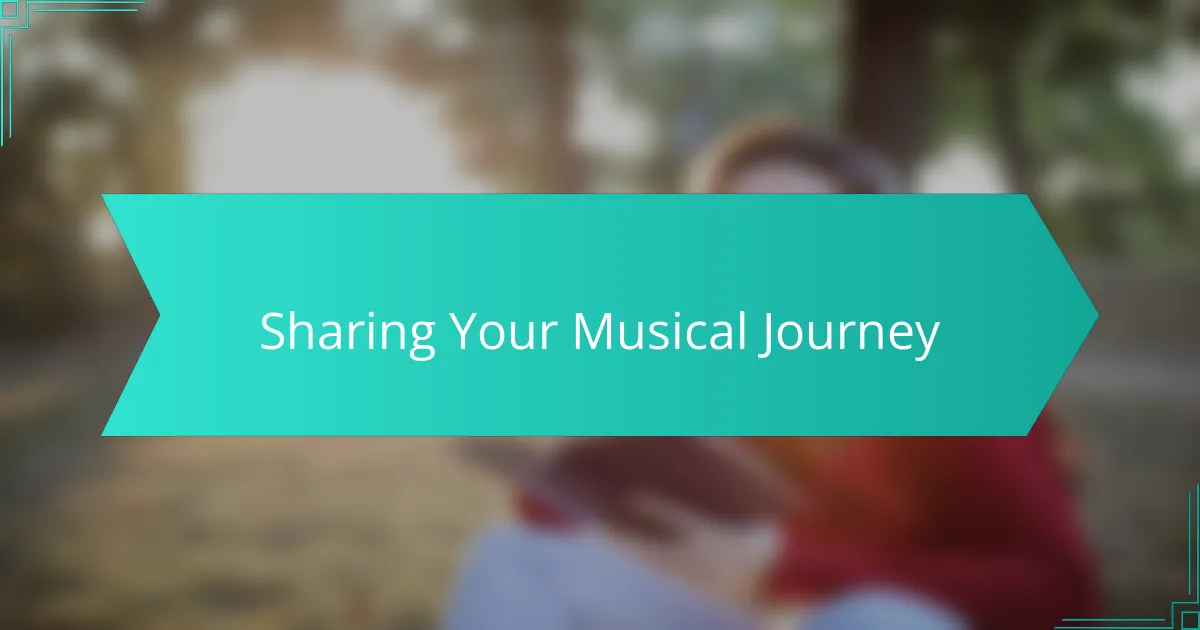
Sharing Your Musical Journey
Sharing your musical journey is a powerful way to connect with others who share your passion. I often find that documenting my experiences on platforms like YouTube not only keeps me accountable but also allows me to reflect on my growth as a musician. One of my favorite moments was uploading my first video covering a song; the support and feedback from fellow musicians and viewers were incredibly uplifting.
As I continued to share my progress, I discovered that many people resonated with my struggles and triumphs. It’s liberating to express myself authentically and see others do the same. Here are some ways to effectively share your musical journey through YouTube:
- Upload regular updates on your practice sessions and performances.
- Offer song breakdowns and tutorials for pieces you love.
- Share personal stories about what music means to you.
- Collaborate with other musicians to broaden your reach and share experiences.
- Engage with your audience by responding to comments and asking for their thoughts.

